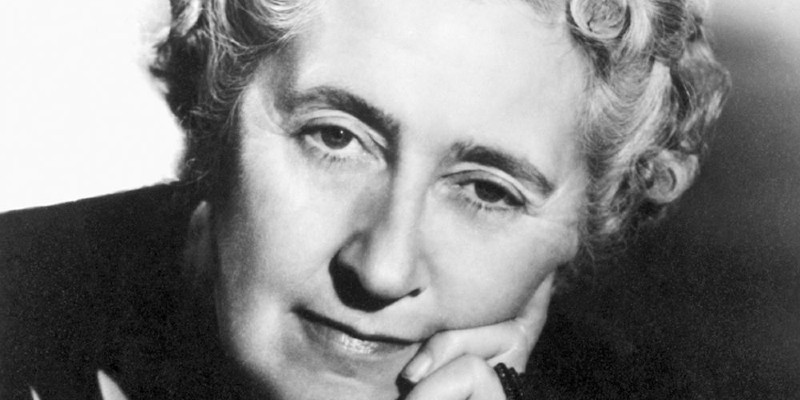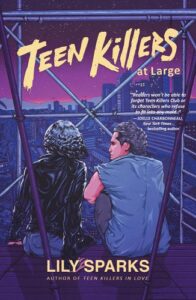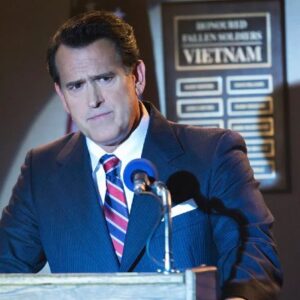A closed circle of dubious personalities gather in one house at the invitation of a mysterious host. They hide tragic secrets, financial disasters, and desperate ulterior motives as they compete to get their target alone. This is the premise for several Agatha Christie novels, and the hit series The Bachelor.
Christie was most interested in examining human nature, and nothing makes that beast surface faster than marriage and murder. Precious few of the Dame’s 66 murder mysteries made it to market without at least one romantic sub-plot, and in between the mysteries she wrote under the pseudonym Mary Westamacott, so she could dedicate entire books to the psychological underpinnings of relationships. Christie herself said the “one book that has satisfied me completely” that she “always wanted to write” was not And Then There Were None but Absent in The Spring, a middle-aged woman’s self-interrogation about her parenting and marriage.
Maybe this is because Christie’s own romantic life was a hot, luscious enigma. After marrying dashing WWI pilot Archibald Christie in 1914, they traveled the world in the roaring 20’s, then he left her for Nancy Neele, a woman ten years her junior. . . the same year Christie’s mother died.
Christie’s response was to disappear. Literally. She dropped her clothes by a popular bathing spot to kick up speculation she had drowned, then after an extensive manhunt turned up at a hotel living under her rival’s surname. And she did not deign to explain any of this in her autobiography.
Instead she went on to have one of the most, successful literary careers in the English language by writing shocking murders that often featured love triangles, name switches, assumed identities and faked drownings.
(If you’re Nancy Neele you’ve got to be thinking twice about setting foot in a manor house, international express train, or idyllic, cozy English village until at least 1975.)
But having lived through this heartbreak, romance, longing, and heartbreak sing through Christie’s work; often as surprising, suspenseful, and integral to the plot as the murder itself. With life and love on the line, the suspense—as any Bachelor contestant who made it to the bungee jump date will tell you—becomes unbearable.
Here are seven of most romantic Christie novels, ranked from the most light and frothy to the darkest and most deeply tortured. I’ve endeavored to keep this relatively spoiler free except for the last entry.

The Secret Adversary – Tommy and Tuppence, as Christie’s contemporaries in age and life experience, feel exceptionally authentic and hopeful when they begin by deciding to go into business as Young Adventurers and then really incorporate by getting engaged by the end of it.
The Man in the Brown Suit — This is again, firmly in plucky spy territory, but what makes this book fascinating is that its around-the-world travelogue is inspired by a real life journey Dame Agatha took with her first husband. Including a surfing interlude inspired by Christie’s first time catching a bodacious wave, and no I am not kidding.
Why Didn’t They Ask Evans? — will make you ask, Why Didn’t She Write More Bobbie and Frankie vehicles? When a man crumpled at the bottom of a cliff asks the titular question before dying, an aristocratic pair of sleuths with perfect chemistry launch themselves full tilt into a convoluted Christie puzzle.
The Mysterious Mr. Quin – This is where the darkness starts to set in. Harley Quin (try not to picture Margot Robbie in a mustache) is a presumably supernatural figure or quite possibly the mortal incarnation of Death, who appears to the mundane Mr. Satterthwaite and helps him essentially resolve a series of troubled romances.
Death on the Nile — one Christie’s most enduring novels, but probably not one of Nancy Neele’s favorites. We have a love triangle with a side ho, homewrecker, and a gadabout gigolo, and for once I’m not talking about Poirot. Doomed love, spurned love, young love, jealous love, amor fati, it’s all in there. The romance and the mystery are firing perfectly on all cylinders and you cannot solve one without understanding the other.
Sad Cypress — Jolene vibes. A devoted woman is displaced by an impossibly beautiful rival. When the rival is poisoned, our heroine seems like the only one with motive and opportunity in the murder, until Poirot is called in to investigate. What makes Sad Cypress so, well, sad, is the dreamy, capital-R Romantic “as in poetic movement” tone of the entire novel. Every paragraph seems to be standing on a hill banked with mist. The gravity given to unrequited feelings is genuinely touching. One wonders if it’s possible for anyone living now to write a book that takes love this seriously.
Endless Night — And now, to grant our final rose to possibly the darkest romance ever written. SPOILERS AHOY. Endless Night, on first read, seems like a cheat: we’ve seen this plot before, multiple times. One of Christie’s later books (published in 1967), the plot is a beat for beat repeat of her 40s short story “The Case of the Caretaker” and essentially Death on the Nile from Simon Doyle’s point of view. But the plot is incidental, the bigger retake is that this is Christie giving herself another crack at The Murder of Roger Ackroyd, and trying to get into the head of a murderer to make him authentically and unsettlingly evil. Dr. James Sheppard, Akroyd’s narrator, is a nice man who surprises us by being a murderer, but he’s still kind enough to put it all together for us. He is a clever literary device, a sleight of hand by Christie as author.
Michael Rogers is a full-blown psychopath, and Christie has seen and considered evil and murder long enough to climb into his head and concinvincly capture his thoughts. Even knowing exactly what happened, no real questions are answered, and he leaves us wishing for one last revelation. But all Christie leaves us with is questions: can he love at all, could he have gone another way, or is he fundamentally broken? Why would life matter to him—his own, or anyone else’s– without love?
***


















